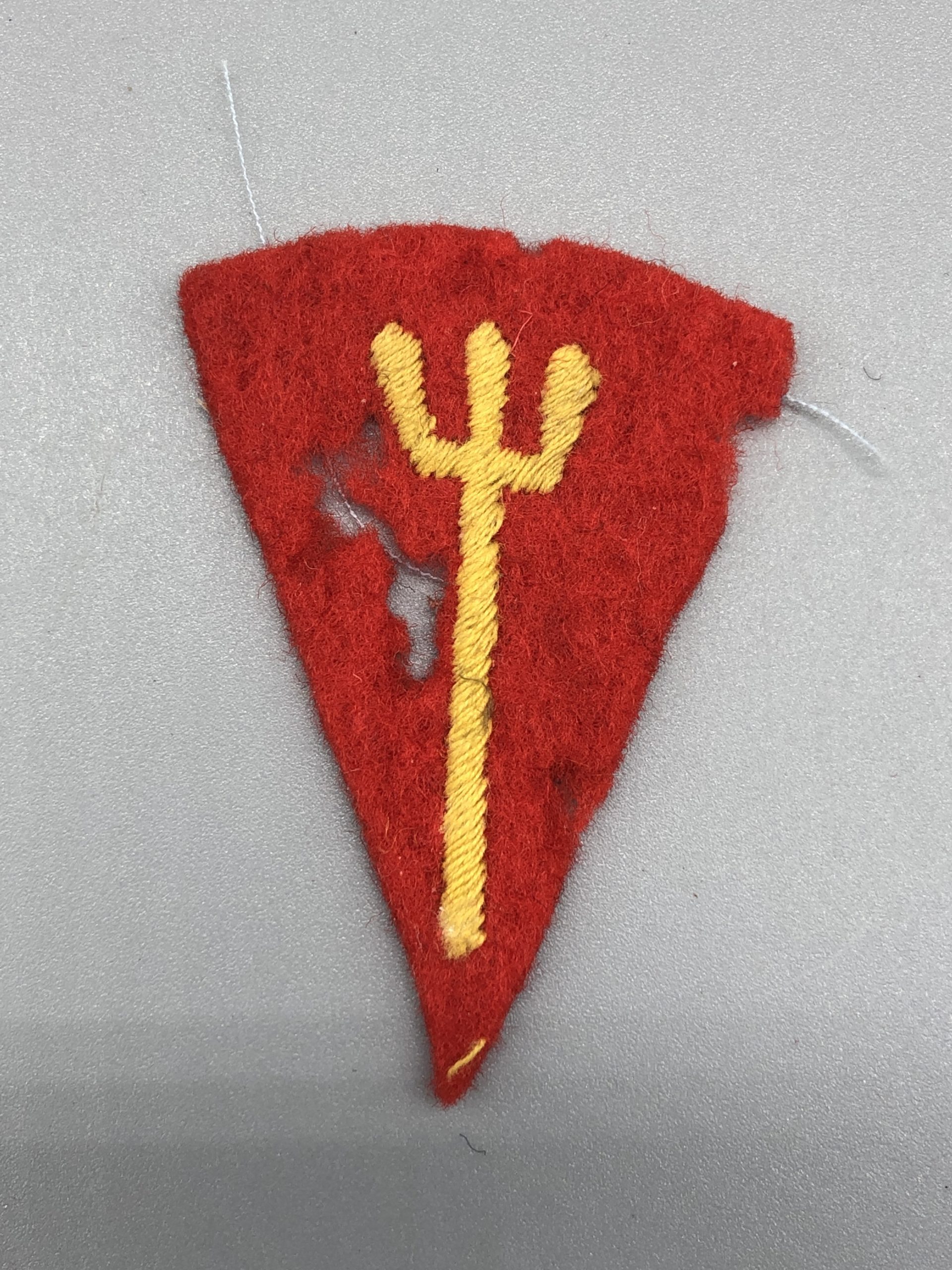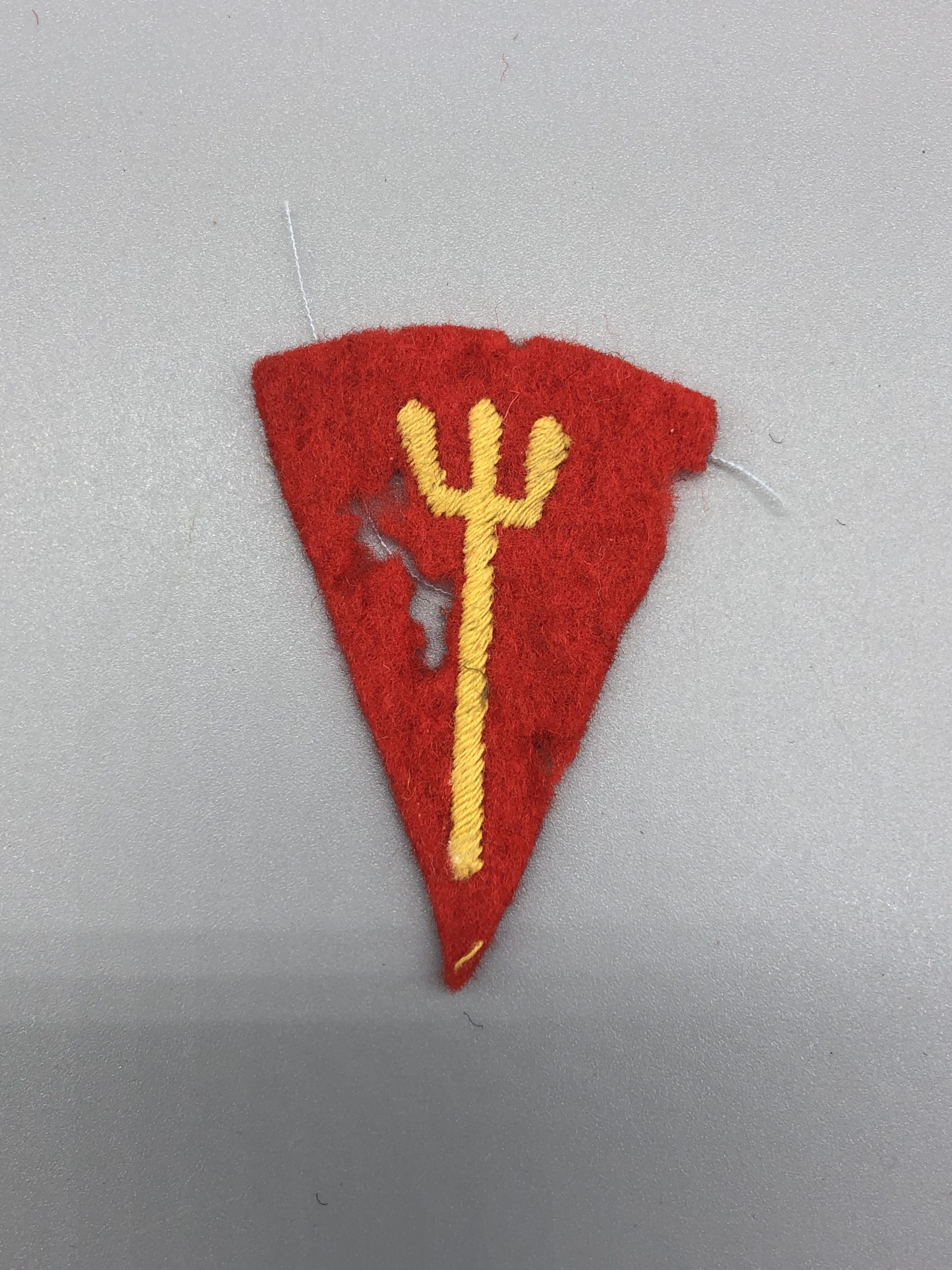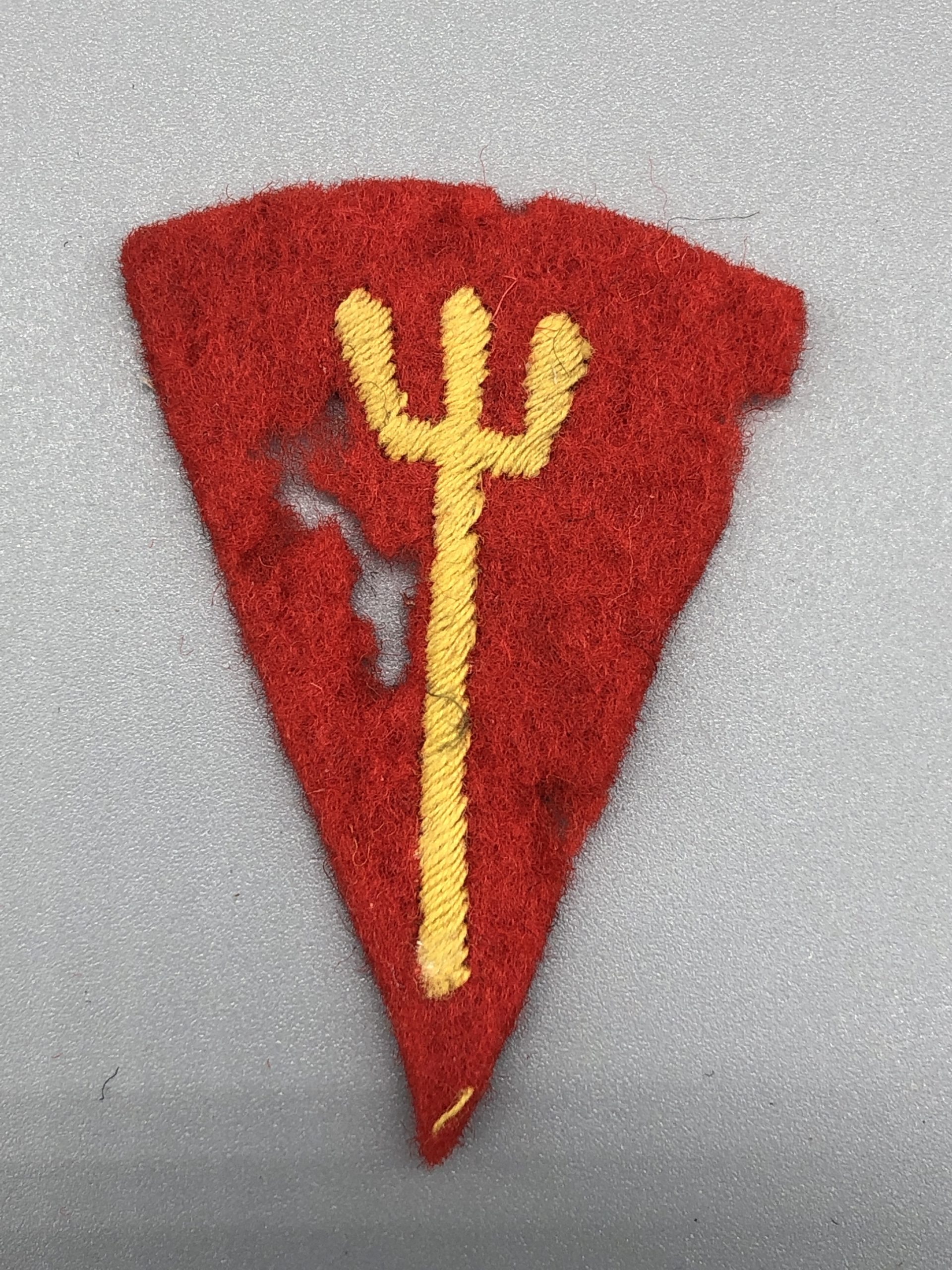Description
British Royal Marine 116th Infantry Brigade
WW2 British 116th Infantry Brigade Should Flash Badge was formed on the outbreak of war in September 1939 a Marine infantry brigade of two battalions began to form at Bisley.
The brigade was deployed to Reykjavik, Iceland at the beginning of May 1940. Two more battalions and a brigade HQ were formed and, together with the recalled Reykjavik brigade and with the addition of 8 Argyll and Sutherland Highlanders, the Marines were sent in August on the abortive expedition to Dakar.
The force never landed and withdrew to Sierra Leone where it spent the winter of 1940-41. On return to the UK the two Brigades, apparently still of two battalions each, were formed into a Light Division and trained as a ‘light striking force’. They trained specifically for the attack on Madagascar scheduled for May 1942 but at the last minute were replaced by Army formations. Senior Marine officers thought that a purely land-based formation such as the Marine Division was, was unlikely to survive among the great preponderence of Army formations and the decision was therefore taken to break up the Division and to find a different role for the Marine personnel. Under the guidance mainly of General Sir Thomas Hunton, Adjutant-General of the Royal Marines, the Division was broken up between July and September 1943 to provide six new Commandos, the remainder of the personnel going to provide crews for minor landing craft flotillas.
At the same time the two Mobile Naval Base Defence Organizations were recalled and also broken up to swell the numbers. Following the June 1944 landings in Normandy many of the Marine personnel employed as landing craft flotilla crews were withdrawn for training in a similar role in the Far East. However, the severe manpower shortage in 21st Army Group resulted in their being re-mustered as infantry at the beginning of 1945. They formed the 116th and 117th Infantry Brigades, Royal Marines, (1 and 15 January 1945 respectively), organised as standard Army Brigades. 116th Brigade was ready first and went to Europe at the beginning of February 1945 where it first saw action on the Maas under Canadian command and later took part in the advance across the Rhine and into North West Germany to the German naval ports. 28th Battalion distinguished itself in the fighting around Oldenburg. The Brigade, with 33rd Battalion from 117 Brigade, administered the surrender of large numbers of German naval units and personnel during the surrender period, particularly in and around Kiel. They were withdrawn to the UK at the end of June 1945




